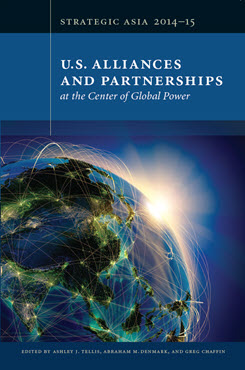The Rise and Persistence of Strategic Hedging across Asia
A System-Level Analysis
This chapter from Strategic Asia 2014–15 analyzes the trend of Asian governments adopting hedging strategies and draws implications for U.S. policy toward the Asia-Pacific.
EXECUTIVE SUMMARY
This chapter analyzes the trend of Asian governments adopting hedging strategies and draws implications for U.S. policy toward the Asia-Pacific.
MAIN ARGUMENT
Asian governments are being driven to pursue hedging strategies in their approaches to foreign policy. At issue is less whether strategic hedging is pervasive than what it means for stability and how long the trend is likely to endure. This is the case whether Asian states are pursuing greater economic integration with China, even as they pursue greater security cooperation with the United States; modernizing their militaries despite often lacking declared adversaries; or engaging in greater levels of security cooperation overall while eschewing both new alliances and rules-based regional institutions. This chapter, therefore, explores some of the policy and strategy implications of the strategic hedging trend by offering three system-level approaches to understanding it: power transition theory, multipolar neorealism, and network complexity.
POLICY IMPLICATIONS
- U.S. policies relating to security cooperation should focus on brokering military cooperation among regional actors and enabling smaller powers to resist coercion by stronger powers.
- Continued active U.S. participation in Asia’s many multilateral institutions, rather than either withdrawing from them or betting on only one, should promote stability by reassuring allies and partners and legitimizing cooperative diplomacy.
- Consensual multilateralism may be the only acceptable or functional model of security governance in Asia. As long as indicators of strategic hedging persist, any order-building project should eschew attempts to replicate a NATO-like structure in the region.
Strategic Asia
The Strategic Asia annual edited volume incorporates assessments of economic, political, and military trends and focuses on the strategies that drive policy in the region. Learn more about Strategic Asia.


